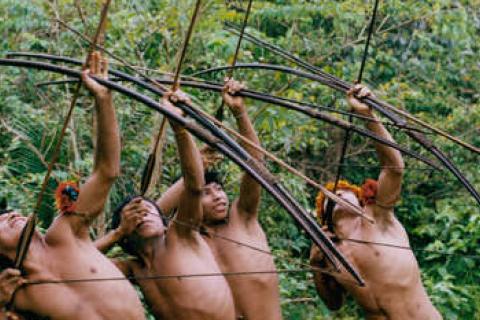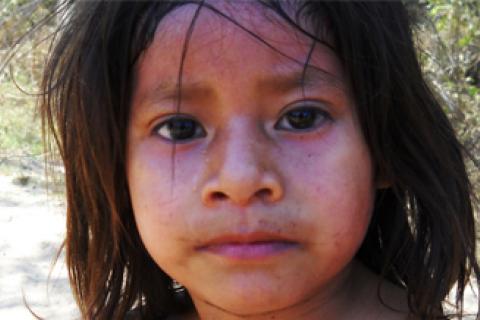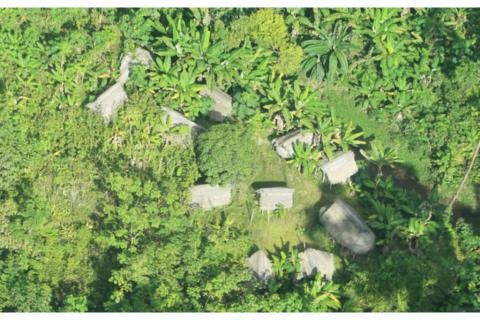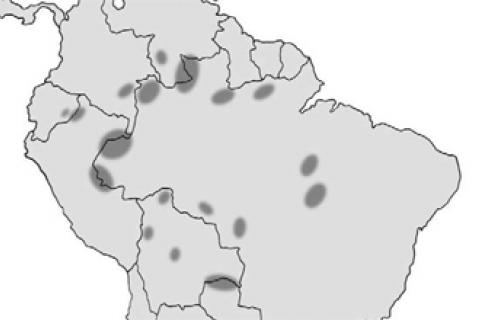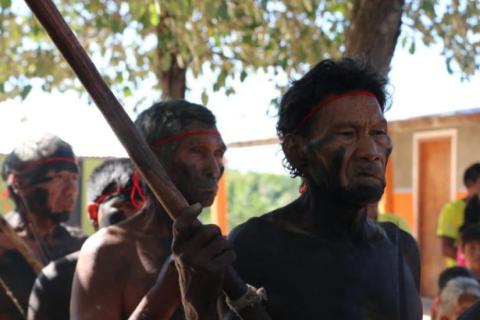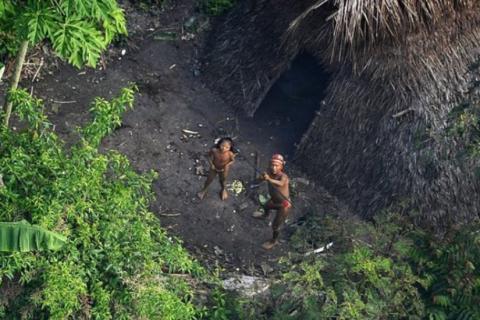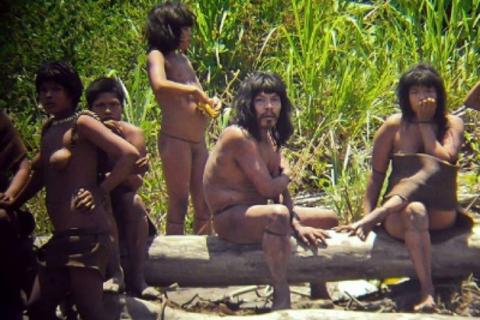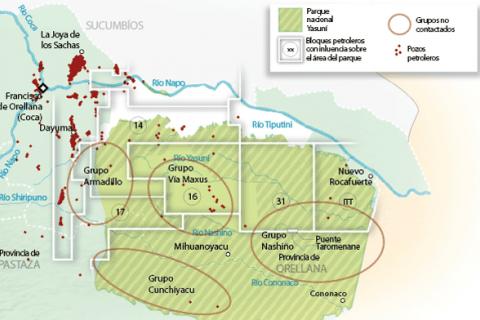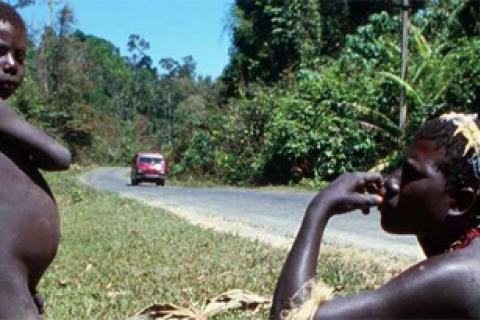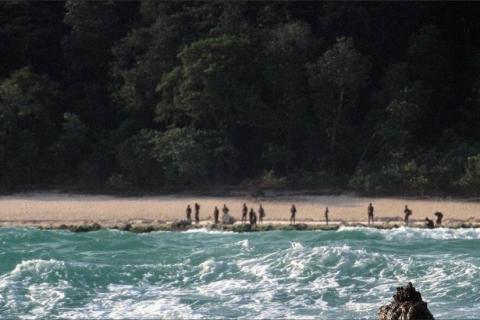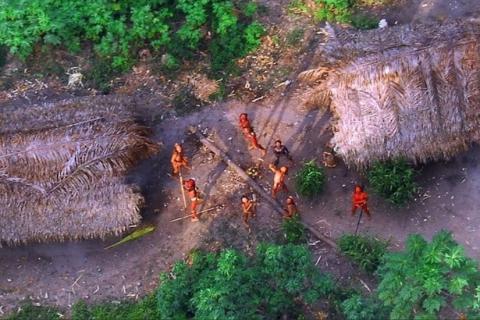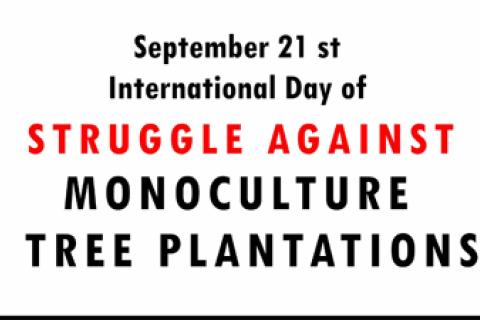Photo: Survival International.
It is remarkable that in the second decade of the 21st century much of the available evidence points to the existence of about 100 uncontacted tribes living on our planet.
The fact that there are any at all is testimony to their resilience, ingenuity, self-sufficiency and adaptability.
Bulletin articles
Photo: By Pablo Cingolani. A Yuqui indigenous girl from the Bolivian Amazon. The Yuqui were a people living in isolation until they were contacted by missionaries between 1967 and 1991. Now they are a people in a situation of extreme vulnerability, precisely as a result of this forced contact.
Image: Approximate location of indigenous peoples living in voluntary isolation and initial contact. Source: Pueblos Indígenas en aislamiento voluntario y contacto inicial, IWGIA – IPES – 2012.
Photo: volunteerlatinamericablog.com.
The spirit came in the form of a crow; it carried me up and said to me:
“Look at Eami tonight. You can see many fires burning.
They are the fires lit by your people, the Ayoreo, illuminating everything.”
We continued to fly and the lights went out one by one.
“This is the future of your people.
The forest is growing dark because the Ayoreo do not live there anymore.
Everything is turning to darkness.”
Photo: Gleyson Miranda, 2010 – FUNAI files, source: Pueblos Indígenas en aislamiento voluntario y contacto inicial, IWGIA – IPES – 2012
Photo: Mashco Piro indigenous peoples in the Madre de Dios reserve - By Diego Cortijo - Sociedad Geográfica Española, 2011. Source: Pueblos Indígenas en aislamiento voluntario y contacto inicial, IWGIA – IPES – 2012
Photo: Survival International
Another major threat looming over some groups of isolated indigenous peoples is mass tourism. In some cases, private operators and local guides organize flights over areas where these groups are known to live, for the entertainment of tourists.
Photo: uncontactedtribes.org
1. A view from the recently contacted Jarawa
The Jarawa, from India’s Andaman Islands have only had friendly contact with settlers living near their forest since 1998. Their sudden appearance out of the forest without their bows and arrows, after more than a century of hostility, is widely credited to Enmai, a young Jarawa man. In 1996 Enmai spent six months in hospital after being found by settlers with a broken leg.
What is the sense of another International Day of Struggle Against Monoculture Tree Plantations, which will take place this coming September 21? Some might ask why such a day is celebrated, since these plantations continue to grow and expand around the world. Is there really any way to stop the expansion of industrial plantations of oil palm, pine, acacia, eucalyptus and rubber trees?
